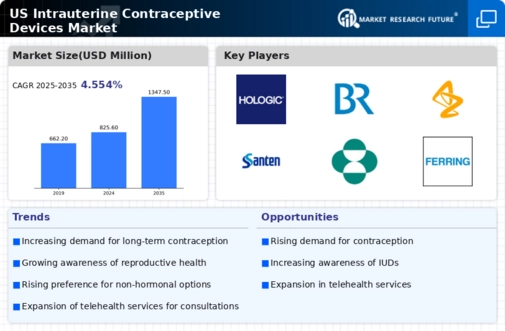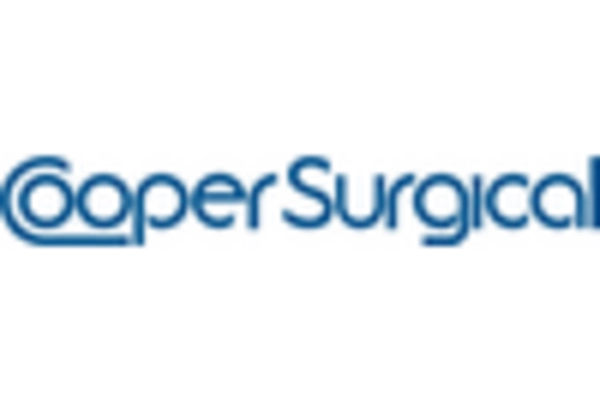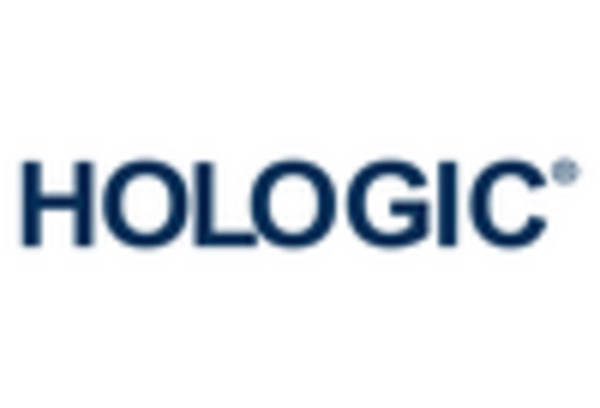Cultural Shifts Towards Family Planning
Cultural attitudes towards family planning are evolving, contributing to the growth of the intrauterine contraceptive-devices market. As societal norms shift, more women are prioritizing their reproductive choices and seeking effective contraceptive methods. This cultural change is reflected in the increasing acceptance of long-acting reversible contraceptives, such as IUDs, which are perceived as empowering tools for women. The intrauterine contraceptive-devices market is likely to benefit from this trend, as more individuals embrace the idea of taking control of their reproductive health and making informed choices.
Increased Government Support and Funding
Government initiatives aimed at promoting reproductive health are playing a crucial role in the intrauterine contraceptive-devices market. Increased funding for family planning programs and educational campaigns has led to greater accessibility of contraceptive options, including IUDs. For instance, the U.S. government has allocated substantial resources to support healthcare providers in offering comprehensive reproductive health services. This support not only enhances awareness but also encourages healthcare professionals to recommend intrauterine devices as a viable option. As a result, the market is likely to benefit from this increased governmental backing, which could lead to a rise in adoption rates and overall market growth.
Advancements in Device Technology and Design
Technological advancements in the design and functionality of intrauterine devices are significantly impacting the market. Innovations such as smaller, more comfortable devices and improved materials are enhancing user experience and increasing adoption rates. These advancements not only improve the efficacy of IUDs but also address common concerns related to discomfort and side effects. As manufacturers continue to invest in research and development, the intrauterine contraceptive-devices market is expected to see a surge in new product offerings, catering to diverse consumer needs and preferences.
Rising Healthcare Costs and Insurance Coverage
The rising costs associated with healthcare in the U.S. are influencing the intrauterine contraceptive-devices market. As individuals seek cost-effective contraceptive solutions, IUDs are becoming increasingly attractive due to their long-term efficacy and lower overall costs compared to other contraceptive methods. Moreover, many insurance plans now cover the cost of IUD insertion and removal, making them more accessible to a broader population. This shift in insurance coverage is likely to drive growth in the market, as more women opt for intrauterine devices as a financially viable option for family planning.
Growing Demand for Effective Contraceptive Solutions
The intrauterine contraceptive-devices market is experiencing a notable increase in demand for effective contraceptive solutions. This trend is driven by a rising awareness among women regarding reproductive health and family planning. As more individuals seek reliable long-term contraceptive options, the market is projected to grow significantly. According to recent estimates, the market is expected to reach approximately $3 billion by 2026, reflecting a compound annual growth rate (CAGR) of around 6%. This growth is indicative of a shift towards intrauterine devices (IUDs) as a preferred choice, as they offer high efficacy rates and convenience, thereby enhancing their appeal in the intrauterine contraceptive-devices market.

















Leave a Comment